Last Updated on January 18, 2024 by Greg Gillson
Winter is perhaps the best time to feed birds in Arizona. The resident desert birds are joined by some wintering birds down from the north.
This article tells why and how to set up a bird feeder in winter in Arizona. I’ll also show photos of common winter birds at feeders in Arizona and give a brief identification outline. I will tell what foods to feed them and what feeders attract each species.
Winters in Arizona are quite nice compared to most of the United States. It may reach freezing at night. But the temperature quickly rises after sunrise. Daytime temperatures in winter may average 70° F. Afternoons are frequently breezy, however.
So, unless you live in the more mountainous regions, you don’t have to worry about snow or prolonged freezing weather. That makes feeding birds in winter easier!
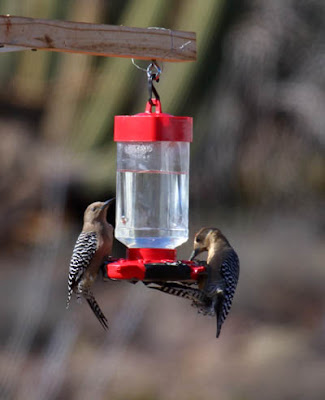 |
| Gila Woodpecker at nectar feeder. Greg Gillson. |
Why feed winter birds in Arizona?
The most common of Arizona’s backyard birds in winter are year-round residents. But they may visit feeders more in winter than in other seasons.
Winter birds at the feeder have a high number of first-year birds. So there is a higher number of birds overall in winter than in summer.
Sparrows and other birds that breed in the north often migrate to Arizona for the winter.
So there is a lot of bird activity for you to observe at your feeder in winter in Arizona.
Unlike in colder areas, backyard feeders are not necessary for the birds to survive. Birds in Arizona can most likely make it through the winter without our help. But they still take advantage of any extra and abundant food source–your feeders!
Feeding birds in Arizona is truly more about the joy you get, not any benefit to the birds.
Warm winter sunshine and birds at the feeder. People living elsewhere in the United States are probably jealous!
In Arizona, a backyard feeder should probably be about the water you can provide. Water helps plants grow and provide shade and shelter for birds. Drinking water can be life-saving for birds, winter or summer.
What birds come to feeders in winter in Arizona?
As stated, most of the birds that come to feeders in winter in Arizona may be year-round residents.
Still, there are many wintering sparrows and other birds that may show up at your feeders. Your winter bird feeder may also attract late fall migrants and early spring migrants.
There are also several backyard birds in Arizona that don’t visit feeders. Please check out my article: The most common backyard birds in Arizona. It includes birds of the backyard, whether or not they visit feeders. I also list the most common birds in summer, spring, and winter. I’ll link to this resource again at the end of this article so you can check it out.
Depending upon where you live within the state of Arizona, you may have quail, doves, and several additional hummingbirds as regular visitors to your feeders.
Here are some of the most common feeder birds in Arizona in winter.
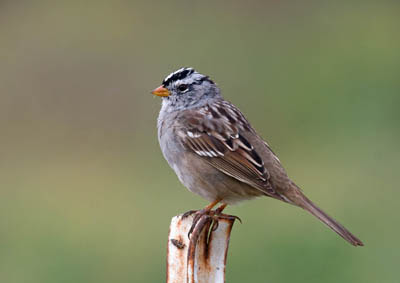 |
| White-crowned Sparrow. Greg Gillson. |
White-crowned Sparrow
These are the most common of several sparrows that migrate to the desert for the winter and come to feeders. They are found in small flocks in winter.
These birds spend most of their time on the ground or in low shrubs. They like weedy habitats along shrubby edges, roadsides, backyards. They nest across northern Canada and Alaska, and in mountains of the West. In winter, northern birds migrate to middle and southern latitudes of the United States. In Arizona there is a small breeding population in the north-central mountains. They winter throughout.
These are rather large sparrows. They appear slim because of the longer tail. They have a cone-shaped bill, thick at the base. Above they are are brown, striped with pale and dark brown on the back. There are two thin white wing bars. The head is rather gray with black and white stripes. For the first year the head stripes are rusty brown and gray. The underparts are pale, gray with buffy flanks. The bill can be pink or yellow, depending upon the population.
Calls include a soft, slightly metallic pink note.
At feeders, White-crowned Sparrows eat smaller seeds such as those found in the mixed seed varieties. They prefer a low platform feeder or even to eat on the ground under the feeders.
 |
| Gila Woodpecker. Greg Gillson. |
Gila Woodpecker
This desert woodpecker is actually quite common in towns where there are many trees for nesting.
Found in the Sonora desert, this bird is linked to saguaro cacti and paloverde trees. This woodpecker is found year-round in the southern half of Arizona and southward into western Mexico.
Fairly slim compared to some of the woodpeckers. The bill is long and straight. The tail is notched or forked as typical for woodpeckers. These birds are plain pale gray-brown on the head and under parts. The back, wings, and tail are barred black-and-white. Males have a small red cap.
They are noisy. They give a rolling churrr call, a high pitched yip, and other mewing calls.
Gila Woodpeckers visit hummingbird feeders for the nectar. They will eat fruit. They love suet and peanut butter mixes.
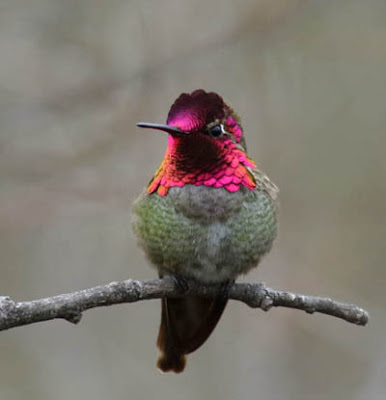 |
| Anna’s Hummingbird. Greg Gillson. |
Anna’s Hummingbird
These hummingbirds are more common around residential homes than anywhere “wild.”
Originally found almost exclusively in California, they have expanded in last half century. Their habitat now is suburban gardens with flowers and hummingbird feeders. Can a bird feeder be a habitat? In Arizona found in the southern half of the state, especially in the western parts. Some winter expansion to more areas.
This is a fairly large chunky hummingbird. The bill is short for the size of the bird, and rather straight. Underparts are dusky green and gray. Upper parts green. Male has entire head and throat covered in iridescent ruby-pink gorget.
The males sing a long insect-like buzzy, squeaking, grating song. They actually nest from December into May. So you may hear the song in “winter” from an exposed perch. Give a loud hard chit call.
Attract Anna’s Hummingbirds with nectar feeders.
 |
| Abert’s Towhee. Greg Gillson. |
Abert’s Towhee
These large shy sparrow-like birds hop and scratch for food in leaf litter on the ground.
These birds are found at low elevations in desert woodlands and streamside thickets. In Arizona they are year-round residents in the southern half of the state and along the Colorado River in the west.
These are big chunky sparrows with a round body. They have a fairly large conical bill. The tail is long and full. They are dark brown throughout. They have a black face. The under tail coverts are rusty cinnamon.
Their call is a sharp peek.
Abert’s Towhees are regular at backyard bird feeders. They eat a variety of seeds, large and small. They prefer feeding on the ground or on low platform feeders.
 |
| House Finch. Greg Gillson. |
House Finch
These birds are found commonly across the United States.
As the name would suggest, these birds are common in residential backyards, orchards, and parks. They are resident throughout Arizona.
They are fairly small and slim with a short notched tail. The head is rounded and the conical bill is curved on the upper mandible. Both genders are dusty brown and gray, heavily streaked. Females have a very non-distinct head pattern. Males have bright red-orange on the forehead, upper breast, and rump.
Birds are talkative. They give chirping calls, including a rising wheat note.
House Finches love black oil sunflower seeds. The best feeder for these birds is a tube feeder. They also eat Niger seed from a thistle sock or finch feeder.
 |
| Yellow-rumped Warbler. Greg Gillson. |
Yellow-rumped Warbler
This warbler switches from insects in summer to berries and seeds in the winter.
They nest in conifer woods across Canada and in the western mountains. In Arizona, they nest in the mountains of the northeastern part of the state. They winter widely throughout the state, including the deserts.
They are small, lively birds with long wings. The bill is rather short and thin. They have white arcs over and under the eyes. Breeding birds are blue above, with black band across the chest. They have a wide white wing panel. In flight they show white tail corners and a yellow rump. In winter they are much drabber gray. They have streaks on the sides. The form most commonly found in Arizona is the one with the yellow throat, rather than white.
The calls of this bird are a husky tchep.
Yellow-rumped Warblers look for insects among your backyard shrubs. They come readily to suet feeders and may even eat some seeds.
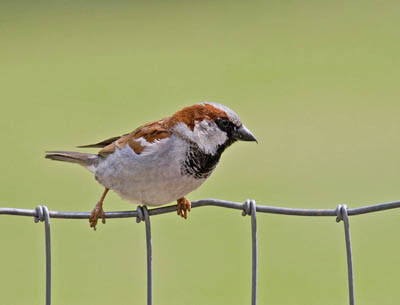 |
| House Sparrow. Greg Gillson. |
House Sparrow
These birds were brought from Europe to fight insect pests. But they became pests themselves.
Flocks of these noisy and messy birds are found in urban areas and farms. They are residents in every town throughout Arizona.
These are chunky birds with big flat heads and short tails. Males are brown above. The nape is chestnut. The crown and rump are gray. The under parts are gray. The bill is conical and black. They have a black chin and, in breeding season, a more extensive black throat. Females are rather plain gray-brown throughout. Their back is striped with dark brown. They have a paler broad eyebrow. The female’s bill is pale.
These are noisy birds. They give incessant chirp and chillip calls.
House Sparrows eat a wide variety of seeds. They are one of the few backyard birds that like milo, the cheap filler in mixed seed blends. They have rather weak feet, so prefer hopper or platform feeders.
 |
| Mourning Dove. Greg Gillson. |
Mourning Dove
This is the most widespread backyard bird across the United States.
These birds are found in residential areas, farms, river edge woodlands, grain fields. They are resident throughout Arizona.
They are plump birds with heavy breast. The head is small and round. The tail is long and pointed. They are pale gray-brown above, slightly more pink below. They have black spots on the wing coverts. The edges of the pointed tail is lined with white, seen in flight.
Their sad mellow cooing gives them their name, boo-hoo hoo hoo.
Mourning Doves eat many seeds, including black oil sunflower seeds and cracked corn. They prefer platform feeders but sometimes crowd onto small hopper feeders.
 |
| Lesser Goldfinch. Greg Gillson. |
Lesser Goldfinch
These little goldfinches of the West stay brightly-colored all year round. They are social and active.
These birds are found in chaparral, oak woodlands, desert stream sides, backyards. Their range in Arizona is complicated. They breed throughout most of the state. They withdraw from the northeast corner of the state in winter.
They are tiny and slim with a large head, short forked tail, and small but conical bill. Males are green above, bright yellow below. They have a black forecrown and white wing patches, obvious as a stripe in the middle of the wing in flight. Females are drabber–a dull green above, dull yellow below. They lack the strong contrast on the wing, and lack the black cap, of the males.
Calls include a rising wheazy wree-eee and a descending minor whistled pee-ur.
Lesser Goldfinches love Niger seed from thistle feeders. They also eat black oil sunflower seeds. They prefer tube feeders without perches so they have less conflict with other larger feeder birds.
Setting up a winter bird feeding station in Arizona
When I visited Arizona last winter I noted that most bird feeding stations consisted of two feeders.
The first was a large nectar feeder suitable for both hummingbirds and Gila Woodpeckers. And I saw more woodpeckers on them than hummingbirds! This 32 ounce oriole feeder looks just like the feeder in the introductory photo of this article with the two Gila Woodpeckers! Orioles are unlikely in winter, but will visit at other seasons.
The second “feeder” I noticed was a large block of seed. These seed blocks were often attached to a fencepost or platform feeder. Some are undoubtedly primarily cracked corn for quail and doves.
However, this 4-pound seed block contains pecans, sunflower seeds and hearts, and millet–no filler like cracked corn, red milo, and wheat that many birds don’t eat. This seed block will attract House Finches, Mourning Doves, Abert’s Towhees, White-crowned Sparrows, and House Sparrows.
If you just want the smaller House Finches and Lesser Goldfinches, then set up only a tube feeder with black oil sunflower seeds.
Snow is unlikely in Arizona. Even extended rain is unusual. So you won’t need a bird feeder with a large roof to keep off the snow and rain, if you don’t want.
In Arizona a bird bath or some kind of fountain will really attract birds! See my review article on bird bath fountains.
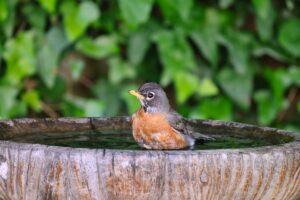
Wrapping Up
Feeding birds in winter in Arizona has several benefits:
Providing supplemental food during times of scarcity: Winter can be a challenging time for birds, especially when natural food sources are limited. Offering feeders with a variety of seeds and nuts can help them survive and maintain their energy levels.
Attracting diverse bird species: Bird feeders can attract a variety of birds to your yard, providing enjoyment for you and your family while also contributing to a healthy ecosystem.
Supporting bird populations: By providing food and a safe haven, you can help local bird populations thrive and potentially even contribute to conservation efforts.
Frequently Asked Questions
Do birds fly to Arizona in the winter?
It’s actually a two-way street when it comes to birds and Arizona in the winter!
Some birds fly to Arizona in the winter:
Snowbirds: Just like humans escaping the cold, many bird species migrate south to Arizona for its warmer temperatures and abundant food sources. These include:
-
- Sandhill cranes: These majestic birds with their trumpet calls flock to southern Arizona’s marshes and fields in the winter.
- Waterfowl: Ducks, geese, and swans find refuge in Arizona’s lakes and rivers during the colder months.
- Songbirds: Warblers, vireos, and buntings escape the harsh northern winters and find plenty of insects and fruit in Arizona’s deserts and woodlands.
But some birds actually stay in Arizona year-round:
Resident birds: Many species, like cactus wrens, curve-billed thrashers, and common ravens, have adapted to Arizona’s dry climate and find enough food and shelter to stay put throughout the year.
So, to answer your question, yes, many birds do fly to Arizona in the winter, but it’s also a winter haven for many resident species who call the state home year-round.
Where can I see Roadrunners in winter in Arizona?
Roadrunners are year-round residents in Arizona, so you have a good chance of spotting them throughout the winter! Here are some tips for increasing your odds:
Sonoran Desert: This semi-arid region with saguaro cacti and ocotillo shrubs is prime roadrunner territory. Look for open areas with scattered vegetation where they can run and hunt.
Washes and dry streams: These provide crucial cover and hunting grounds for roadrunners.
Mountain foothills: Especially in lower elevations, these areas offer diverse terrain and good vantage points for roadrunners.
Does the Cactus Wren visit backyard feeders in winter?
While most Cactus Wrens stick to their natural diet of insects and spiders, they might occasionally visit backyard feeders in the winter, especially under certain conditions:
- Limited natural food: If insects become scarce during colder months, cactus wrens might be more receptive to alternative food sources like feeders.
- Attractive feeder offerings: Suet cakes, peanut butter, and shelled peanuts are particularly enticing options for them.
- Location of the feeder: Place feeders near dense shrubs or cactus patches, providing the wrens with a sense of security and mimicking their natural foraging environments.
Related articles
These related articles should answer your questions on setting up a bird feeder. They will get you started viewing and identifying your backyard birds:
The most common backyard birds in Arizona
My recommended bird feeder setup
Bird seeds that attract the most birds
Different kinds of bird feeders for different birds








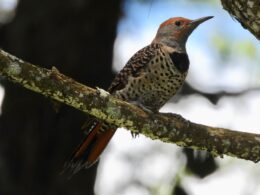

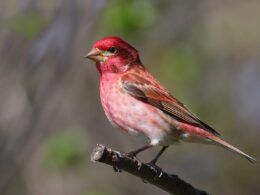
Greg! Thank you for this article!! Very informative and well written. Best to you and stay healthy. Awesome shots too throughout your blog!
Thanks you!